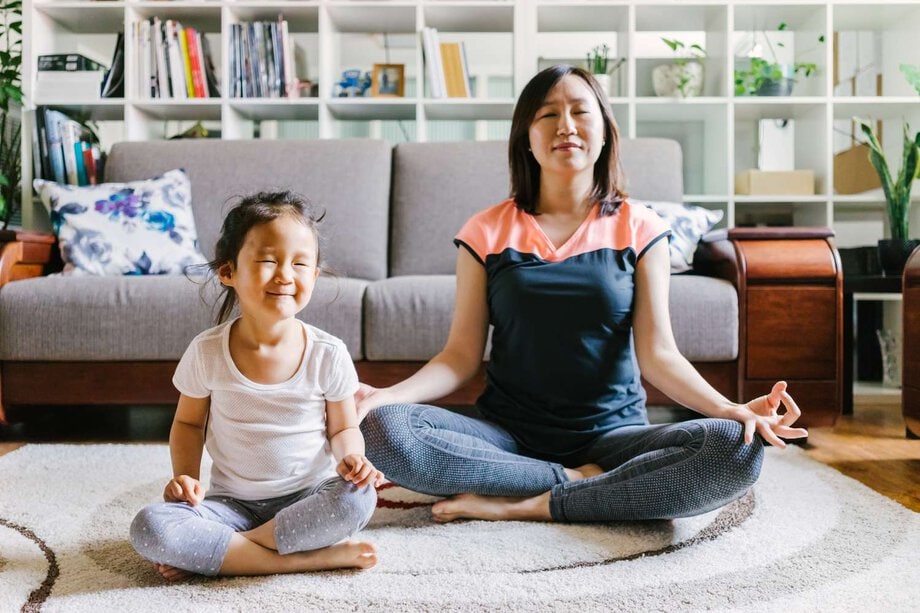Guided Meditation for Kids: Fostering Mindfulness From a Young Age

Are you looking for ways to instill mindfulness in your children from a young age? Guided meditation for kids can be a powerful tool to help them develop a sense of calm and focus.
In this article, we will explore the importance of mindfulness for children and the benefits of introducing guided meditation to them.
You will also find practical tips on how to create a peaceful environment and engaging techniques to make meditation fun for your little ones.
Let’s embark on this journey of fostering mindfulness together!
Key Takeaways
- Mindfulness is crucial for children’s emotional well-being and development.
- Guided meditation helps children develop focus, emotional resilience, and cognitive skills.
- Introducing meditation to children should be done in a gentle and engaging way to cultivate mindfulness.
- Creating a calm and peaceful environment is essential for successful meditation sessions with kids.
The Importance of Mindfulness for Children
Mindfulness is crucial for your child’s emotional well-being and development. Teaching mindfulness to young kids can have a profound impact on their overall happiness and ability to cope with stress. By engaging in mindfulness activities for children, you can help them develop important skills such as self-awareness, emotional regulation, and empathy.
One effective way to teach mindfulness to young kids is through guided meditation. Guided meditations provide a structured and calming environment where children can focus their attention on their breath or imagine peaceful scenes. This helps them become more present in the moment and cultivate a sense of inner calm.
Additionally, incorporating mindfulness activities into your child’s daily routine can further enhance their emotional well-being. Simple activities such as mindful breathing exercises, gratitude journals, or mindful eating can help children develop a greater sense of self-awareness and appreciation for the present moment.
Benefits of Guided Meditation for Kids
You’ll quickly notice the positive effects of introducing guided meditation to your child, helping them develop focus and emotional resilience. Through this practice, your child’s cognitive development will flourish.
Guided meditation encourages them to pay attention to their thoughts, sensations, and emotions, enhancing their ability to concentrate and think critically. As they learn to quiet their minds, they’ll become more self-aware and better equipped to manage stress.
Stress management is an essential skill for children, as they navigate the challenges of growing up. Guided meditation provides them with a tool to calm their minds and regulate their emotions, reducing anxiety and promoting overall well-being.
How to Introduce Meditation to Children
When introducing meditation to children, it’s important to create a peaceful and comfortable environment. Teaching mindfulness to kids can be a wonderful way to help them navigate their emotions and develop a sense of inner calm. Here is a simple guide to help you introduce meditation to children:
| Step 1 | Step 2 | Step 3 | Step 4 |
|---|---|---|---|
| Set the mood | Start with simple exercises | Use visualizations | Encourage consistency |
In step one, create a serene space by dimming the lights and playing soft music. Next, guide children through simple exercises like deep breathing or body scans in step two. Step three involves using visualizations, like imagining a peaceful place, to help kids relax. Lastly, encourage consistency by making meditation a regular practice. By introducing meditation to children in a gentle and engaging way, you can help them cultivate mindfulness and enjoy the numerous benefits it offers.
Tips for Creating a Calm and Peaceful Environment
To create a calm and peaceful environment, dim the lights and play soft music to set the mood.
Creating a peaceful atmosphere is essential for setting up a meditation corner that promotes relaxation and mindfulness. Start by finding a quiet corner in your home where you can set up a comfortable seating area. Add cushions or a yoga mat to create a cozy space.
Consider incorporating elements of nature, such as plants or a small indoor fountain, to bring a sense of tranquility. Keep the area clutter-free and organized to minimize distractions. You may also use essential oils or incense to create a soothing aroma.
Fun and Engaging Meditation Techniques for Kids
Creating a fun and engaging meditation experience for children can involve incorporating playful activities and interactive exercises. Meditation games are a great way to introduce mindfulness to kids in an enjoyable way.
For example, you can play the ‘Mindful Scavenger Hunt’ game, where children are encouraged to find specific objects in nature while practicing mindful breathing.
Another interactive mindfulness activity is the ‘Sensory Exploration’ game, where kids explore various textures, smells, and tastes while focusing on their senses.
Incorporating movement into meditation can also be fun, such as playing the ‘Yoga Freeze Dance’ game, where children dance to music and freeze in different yoga poses when the music stops.
These interactive activities help children develop mindfulness skills while having a blast.
Frequently Asked Questions
Are There Any Potential Risks or Negative Effects of Introducing Guided Meditation to Children?
Introducing guided meditation to kids can have potential risks and negative effects. However, when done properly, it can foster mindfulness in children. It’s important to consider their age, emotional readiness, and any preexisting conditions before incorporating guided meditation for kids.
How Long Should a Guided Meditation Session for Kids Typically Last?
A typical guided meditation session for kids should last around 10-15 minutes. It is recommended for kids of all ages, as it helps in fostering mindfulness and promoting relaxation and focus.
Can Guided Meditation Help Children With Attention Deficit Disorders or Hyperactivity?
Guided meditation can benefit children with ADHD or ADD by promoting focus and reducing hyperactivity. Incorporating it into their daily routine can help them develop mindfulness skills and manage their symptoms effectively.
At What Age Can Children Start Practicing Guided Meditation?
You can start practicing guided meditation with your child from a young age. It has numerous benefits for their emotional development and fosters mindfulness in early childhood.
Are There Any Specific Techniques or Strategies to Help Children Maintain Focus and Engagement During Guided Meditation Sessions?
To help your kids maintain focus and engagement during guided meditation, try using visualization techniques. Encourage them to imagine peaceful scenes or picture themselves achieving their goals. Incorporating interactive elements can also make the experience more engaging.








